Vienna's Timeless Treasures Unveiled
Join us for a free walking tour through Vienna's rich history, where every step unveils stories of art, music, and architectural wonders that define this majestic city.
Time
3 Hours
Stops
9 Places
Distance
3.2 km
Stephansdom (St. Stephen's Cathedral)
Begin your tour at the iconic Stephansdom, a symbol of Vienna and a masterpiece of Gothic architecture, right in the heart of the city.

Stephansdom (St. Stephen's Cathedral) (Source: Google Maps)
Stephansdom, or St. Stephen's Cathedral, is a remarkable example of Gothic architecture and a defining symbol of Vienna. With its origins dating back to the 12th century, this majestic cathedral features a stunning south tower that rises to 136 meters, making it the tallest church tower in Austria. The intricate tile roof, adorned with over 230,000 colorful tiles, showcases the double-headed eagle of the Habsburg dynasty, reflecting the cathedral's historical significance. Inside, visitors can marvel at the ornate altars, chapels, and the impressive organ, which has been played by renowned composers. The cathedral also serves as the final resting place for several important figures, including Duke Rudolf IV. A visit to Stephansdom is not just a glimpse into Vienna's architectural prowess but also a journey through the city's rich history.
Mozarthaus Vienna
Just a short walk from the cathedral, visit the Mozarthaus, where the famous composer Wolfgang Amadeus Mozart lived and composed many of his works.
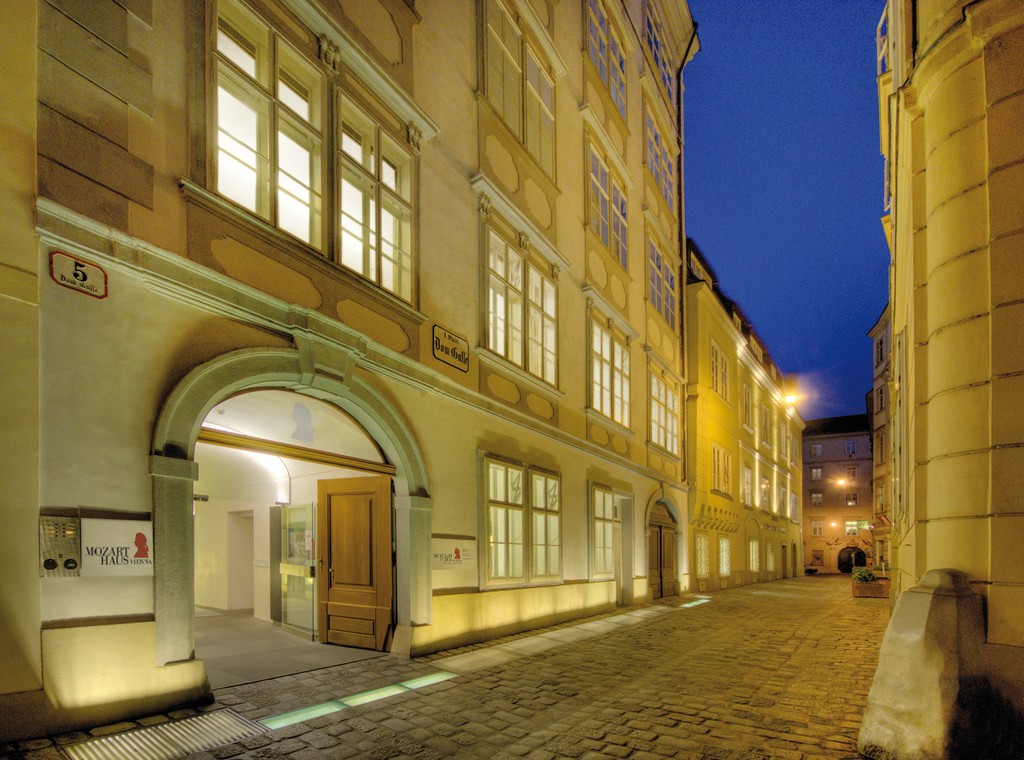
Mozarthaus Vienna (Source: Google Maps)
Mozarthaus Vienna is a historic site that celebrates the life and work of one of the world's greatest composers, Wolfgang Amadeus Mozart. Located in the heart of Vienna, this former residence is where Mozart lived from 1784 to 1787, during which he composed some of his most famous works, including 'The Marriage of Figaro' and 'Don Giovanni.' The building, which has been meticulously preserved, provides a unique insight into Mozart's life, showcasing original manuscripts, letters, and personal belongings. The museum also features interactive exhibits that engage visitors with Mozart's music and legacy. As a cultural landmark, Mozarthaus is a must-visit for music lovers and anyone interested in the rich artistic history of Vienna.
Ankeruhr (Anchor Clock)
Head towards the Ankeruhr, a unique art nouveau clock that features historical figures passing by each hour, located in the Hoher Markt.
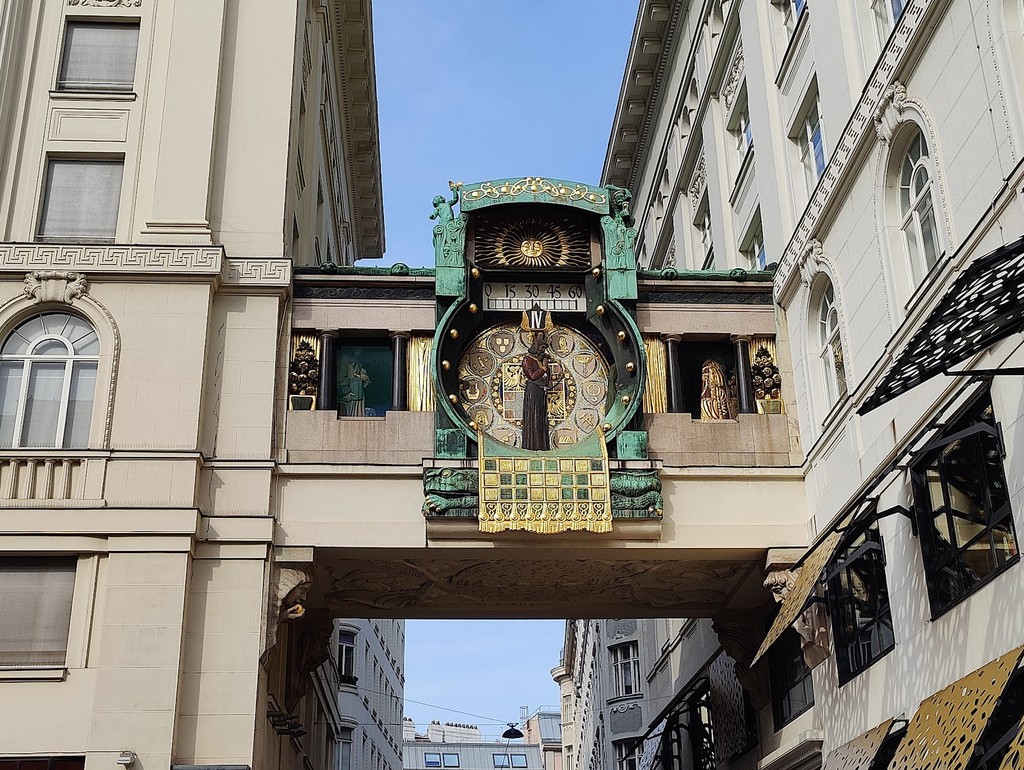
Ankeruhr (Anchor Clock) (Source: Google Maps)
The Ankeruhr, or Anchor Clock, is an iconic timepiece located in the Hoher Markt district of Vienna. Designed by artist Franz von Matsch, this unique art nouveau clock was completed in 1914 and features a series of twelve historical figures who appear every hour, representing significant moments in Austrian history. The clock itself is a stunning example of early 20th-century design, adorned with intricate mosaics and colorful tiles. It not only serves as a functional clock but also as a vibrant piece of public art that attracts both locals and tourists. The Ankeruhr is a testament to Vienna's rich artistic heritage and continues to be a popular spot for visitors to capture memorable photos while learning about the historical figures depicted.
Judenplatz Holocaust Memorial
Continue to the poignant Judenplatz Holocaust Memorial, a solemn tribute to the Jewish victims of the Holocaust.
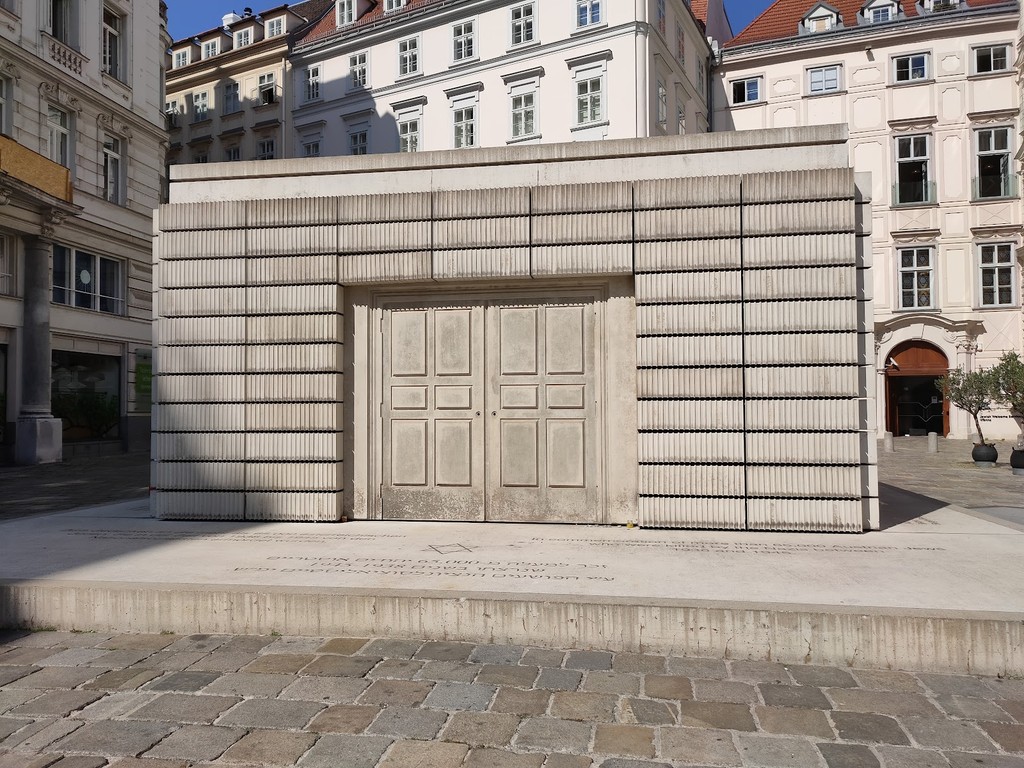
Judenplatz Holocaust Memorial (Source: Google Maps)
The Judenplatz Holocaust Memorial, also known as the Nameless Library, is a poignant tribute to the Jewish victims of the Holocaust located in the heart of Vienna. Designed by artist Rachel Whiteread and inaugurated in 2000, the memorial features a stark, cast-concrete structure resembling a library filled with empty bookshelves, symbolizing the loss of Jewish culture and knowledge during the Holocaust. The memorial is situated on the site of the former Jewish ghetto and serves as a powerful reminder of the atrocities faced by the Jewish community in Austria. The surrounding area includes an information center that provides visitors with educational resources about Jewish history and the Holocaust. This memorial stands as a solemn place for reflection, honoring the memories of those who suffered and perished.
Hofburg Palace
Proceed to the Hofburg Palace, the former imperial palace that now houses museums and the official residence of the Austrian President.
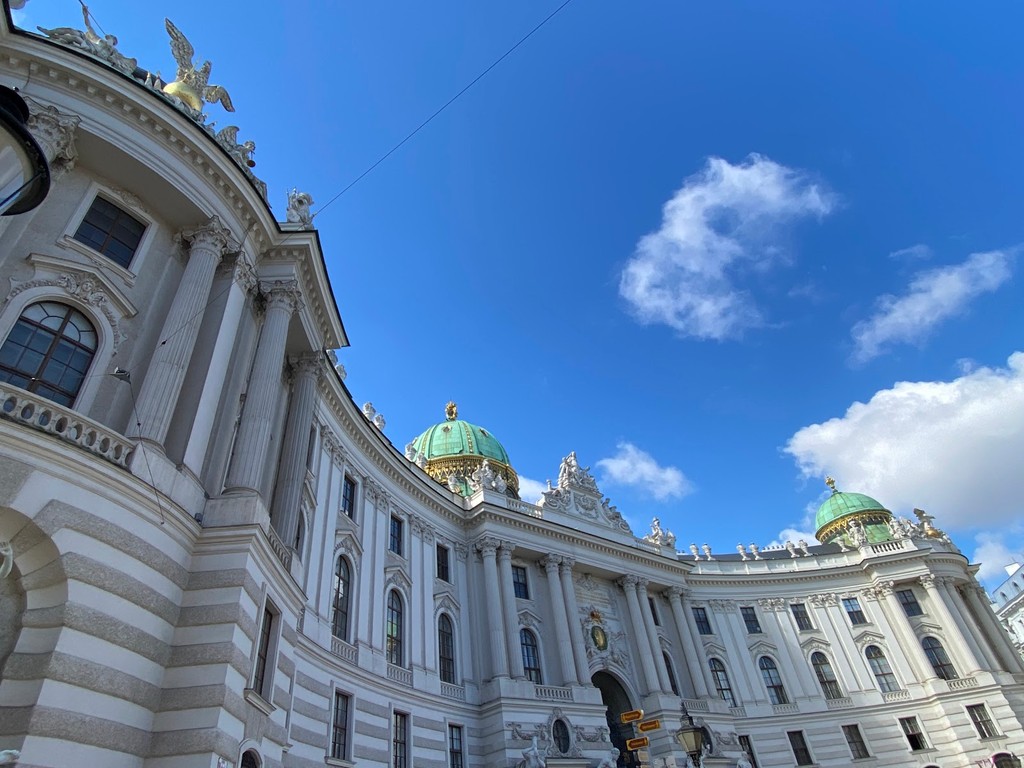
Hofburg Palace (Source: Google Maps)
Hofburg Palace is a magnificent complex that served as the imperial palace of the Habsburg dynasty for centuries. Located in the center of Vienna, the palace showcases a blend of architectural styles, including Gothic, Renaissance, and Baroque, reflecting its long history and the various renovations it has undergone. The palace houses several museums, including the Imperial Apartments, the Sisi Museum dedicated to Empress Elisabeth, and the Austrian National Library. Visitors can explore the lavish rooms adorned with opulent furnishings and artworks that tell the story of the Habsburgs' reign. The Hofburg is also the official residence of the President of Austria and a venue for state ceremonies. Its grandeur and historical significance make it a key landmark in Vienna, attracting millions of visitors each year.
Austrian National Library
Explore the Austrian National Library, renowned for its stunning Baroque architecture and vast collection of historical texts.
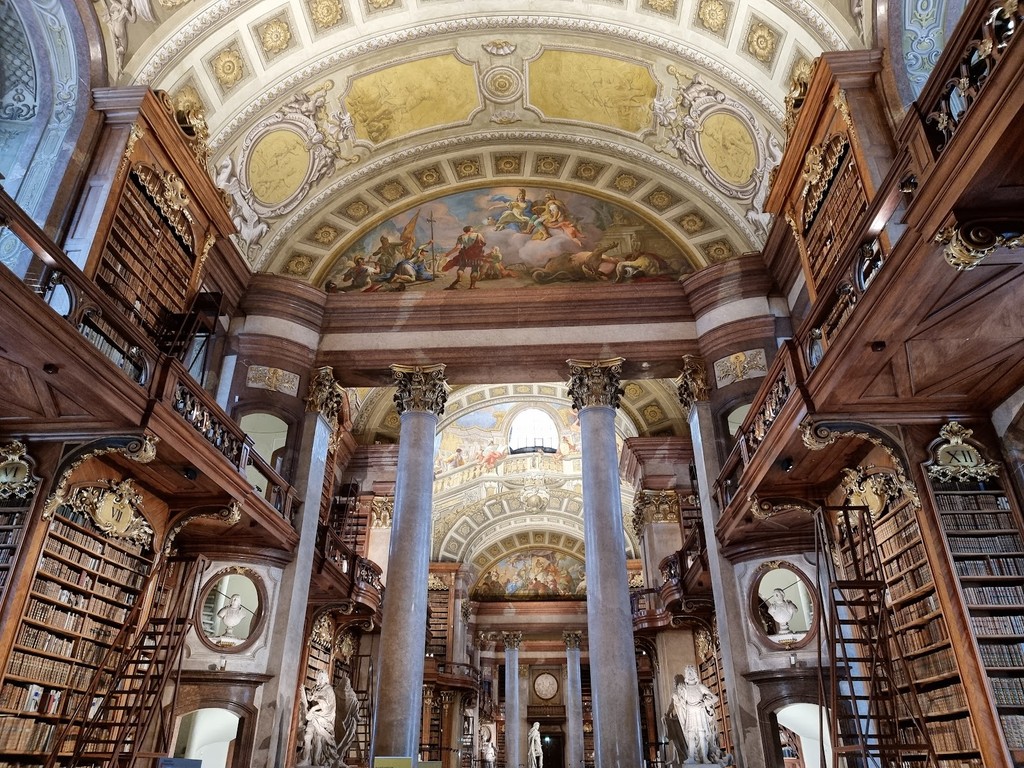
Austrian National Library (Source: Google Maps)
The Austrian National Library, located within the Hofburg Palace complex, is one of the largest and most prestigious libraries in the world. Founded in the 18th century, it houses a vast collection of over 12 million items, including rare manuscripts, maps, and historical documents. The library's stunning Baroque architecture, designed by architect Johann Bernhard Fischer von Erlach, features a grand reading room adorned with frescoes and ornate ceilings, creating an inspiring environment for visitors. The library is home to the Papyrus Collection, which includes some of the oldest written documents, and the Globe Room, showcasing a remarkable collection of globes and atlases. As a center of knowledge and culture, the Austrian National Library plays a vital role in preserving Austria's literary heritage and continues to attract scholars and tourists alike.
Albertina Museum
Next, visit the Albertina Museum, home to one of the largest and most important print rooms in the world, featuring works by Dürer, Klimt, and more.
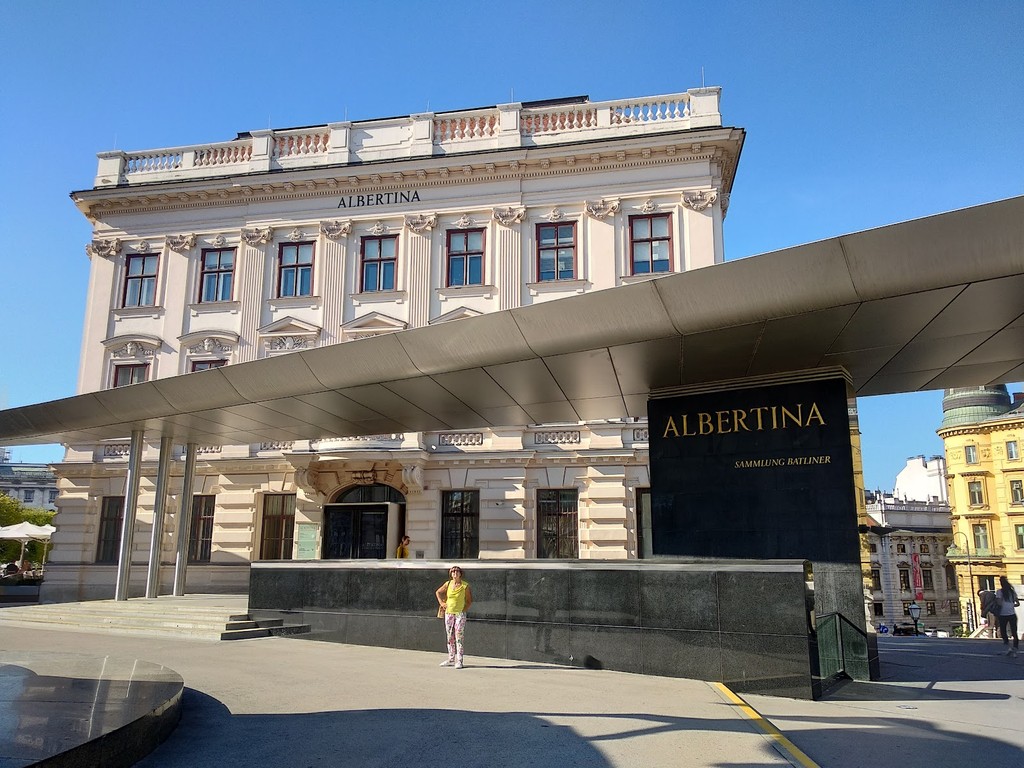
Albertina Museum (Source: Google Maps)
The Albertina Museum is renowned for its extensive collection of graphic arts and is housed in a historic palace that once belonged to the Duke of Saxe-Teschen. The museum boasts one of the largest and most important print rooms in the world, featuring works by renowned artists such as Albrecht Dürer, Gustav Klimt, and Egon Schiele. The Albertina's collection includes over 1 million prints and drawings, offering a comprehensive overview of the history of graphic art. In addition to its impressive permanent collection, the museum hosts temporary exhibitions that showcase contemporary artists and thematic displays. The Albertina also features beautiful state rooms with exquisite interiors, providing visitors with a glimpse into the opulent lifestyle of the aristocracy. As a cultural landmark, the Albertina Museum is a must-visit for art enthusiasts and anyone interested in the evolution of visual art.
Vienna State Opera
Walk to the Vienna State Opera, a world-famous opera house known for its outstanding performances and architectural grandeur.
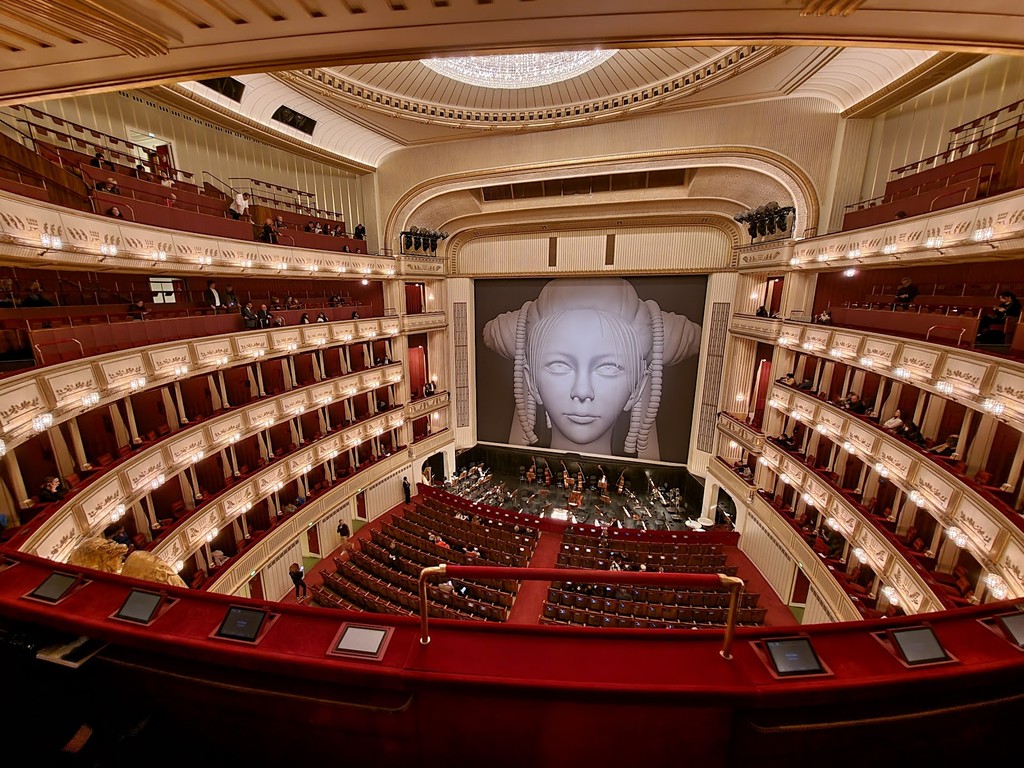
Vienna State Opera (Source: Google Maps)
The Vienna State Opera is one of the most prestigious opera houses in the world, known for its exceptional performances and stunning architecture. Opened in 1869, the opera house was designed by architects August von Sicardsburg and Eduard van der Nüll in the Neo-Renaissance style, featuring a grand façade and an opulent interior adorned with chandeliers and gilded decorations. The Vienna State Opera is home to the Vienna Philharmonic Orchestra and hosts a diverse repertoire of operas and ballets, attracting renowned artists from around the globe. Visitors can take guided tours to explore the lavish building, learn about its history, and appreciate the artistic legacy it represents. The opera house also plays a significant role in Vienna's cultural life, hosting various events and performances throughout the year, making it a focal point for music lovers.
Karlskirche (St. Charles's Church)
Conclude your tour at the stunning Karlskirche, a Baroque church with a magnificent dome and a reflecting pool that adds to its beauty.
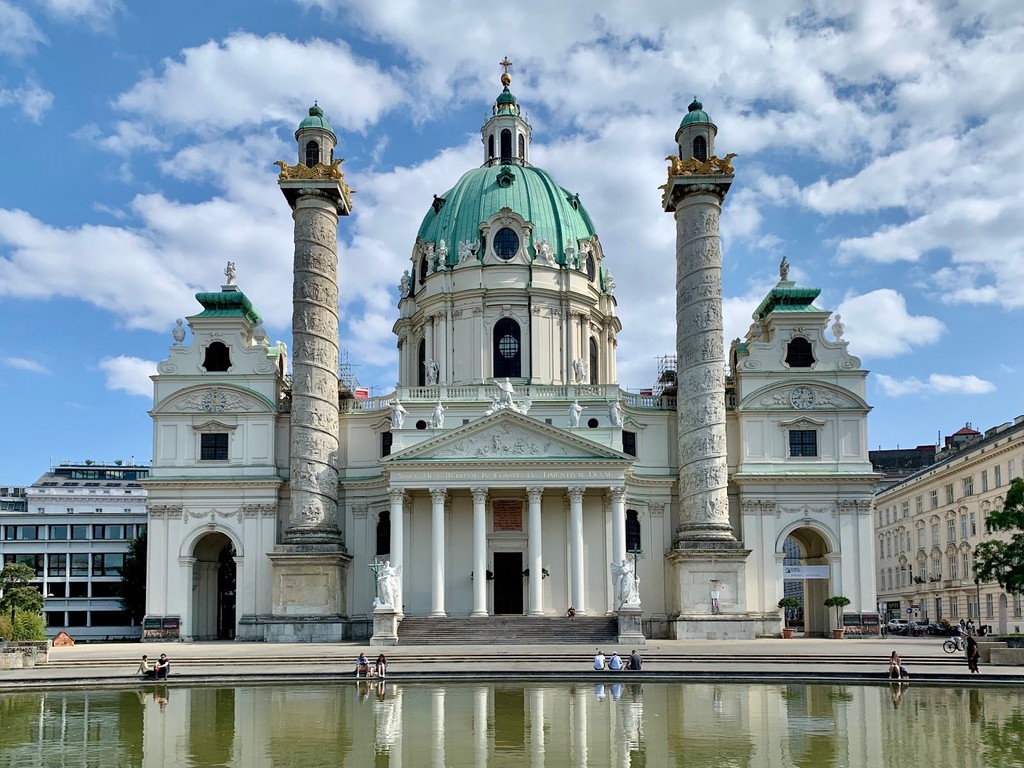
Karlskirche (St. Charles's Church) (Source: Google Maps)
Karlskirche, or St. Charles's Church, is a stunning Baroque church located in Vienna, known for its impressive dome and beautiful architecture. Commissioned by Emperor Charles VI in the early 18th century, the church was built as a tribute to St. Charles Borromeo during a time of plague. Its striking façade features a grand entrance flanked by two ornate columns and a magnificent dome that rises to 72 meters, making it one of the tallest churches in Vienna. The interior is equally breathtaking, adorned with frescoes and intricate details that reflect the Baroque style. Visitors can enjoy panoramic views of the city from the dome's viewing platform. The church is not only a place of worship but also a significant cultural landmark, hosting concerts and events that celebrate its rich artistic heritage.

Your travels, your rules.
Create your own Free Walking Tours.
Set your preferences, distances and anything you want to do or see.
Completely free, no payment required.